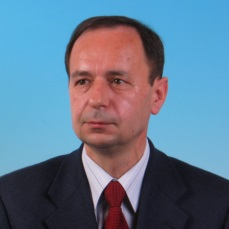Synthesis, Structure and Property Analysis of Crystalline Layers
A special issue of Crystals (ISSN 2073-4352). This special issue belongs to the section "Inorganic Crystalline Materials".
Deadline for manuscript submissions: closed (20 August 2021) | Viewed by 25640
Special Issue Editors
Interests: scintillators; development of luminescent materials in the single crystalline and crystals forms; energy transfer proceses in scintillators; defects and dopant as emission and trapping centers in dielectrics
Special Issues, Collections and Topics in MDPI journals
Interests: CVD diamond; thin nano- and microcrystalline films; diamond single crystals; optical spectroscopy
Special Issues, Collections and Topics in MDPI journals
Interests: CVD diamond layers; metallization; Raman spectroscopy; X-ray diffraction; cathodoluminescence; thermoluminescence; the use of polycrystalline diamond layers in the dosimetry of ionizing radiation
Special Issues, Collections and Topics in MDPI journals
Special Issue Information
Dear Colleagues,
The aim of this Special Issue is to stimulate scientific exchange of knowledge among scientists and engineers working in the fields of crystal growth, crystal engineering, and the application of crystalline materials in industry.
We cordially invite you to publish the latest scientific results, both theoretical and experimental concerning nucleation and growth kinetics of metals, semiconductors, superconductors, and magnetic materials, both in the form of single crystals and in the form of thin polycrystalline layers.
Recent achievements in the field of synthesis and growth of monocrystalline and polycrystalline materials have opened their possibilities for many existing and prospective applications, including optics and electronics, as well as biomedicine, quantum computing, etc. Therefore, they are important materials with a strategic future for both basic model research in the field of solid state physics and chemistry and engineering applications.
We invite researchers to contribute to the Crystals Special Issue on “Synthesis, Structure, and Property Analysis of Crystalline Layers”, which is intended to serve as a multidisciplinary forum covering broad aspects of the science, technology, and application of a broad range of crystalline materials.
The Special Issue will cover (but not be restricted) to the following topics:
- Methods of synthesis of crystalline materials;
- Characterization methods (optical, electrical, structural, mechanical, etc.);
- Tailoring to their end application as chemo- and bio-sensors, transducers, optical elements, electronic devices, etc.;
- Smart materials and systems.
It is a great honor to invite you to submit a manuscript for this Special Issue. Full papers, communications, and reviews are welcome.
Prof. Dr. Yuriy Zorenko
Prof. Kazimierz Fabisiak
Prof. Kazimierz Paprocki
Prof. Szymon Łoś
Guest Editors
Manuscript Submission Information
Manuscripts should be submitted online at www.mdpi.com by registering and logging in to this website. Once you are registered, click here to go to the submission form. Manuscripts can be submitted until the deadline. All submissions that pass pre-check are peer-reviewed. Accepted papers will be published continuously in the journal (as soon as accepted) and will be listed together on the special issue website. Research articles, review articles as well as short communications are invited. For planned papers, a title and short abstract (about 100 words) can be sent to the Editorial Office for announcement on this website.
Submitted manuscripts should not have been published previously, nor be under consideration for publication elsewhere (except conference proceedings papers). All manuscripts are thoroughly refereed through a single-blind peer-review process. A guide for authors and other relevant information for submission of manuscripts is available on the Instructions for Authors page. Crystals is an international peer-reviewed open access monthly journal published by MDPI.
Please visit the Instructions for Authors page before submitting a manuscript. The Article Processing Charge (APC) for publication in this open access journal is 2600 CHF (Swiss Francs). Submitted papers should be well formatted and use good English. Authors may use MDPI's English editing service prior to publication or during author revisions.
Keywords
- Method of synthesis of metals, semiconductors, magnetics, inorganic, and organic substances in form of bulk and thin films
- Characterization of electrical, magnetic, optical, mechanical, and structural properties
- Nanomaterials and multilayer heterostructures
- Spectroscopy of defects and dopants
- Luminescence, cathodoluminescence, thermoluminescence
- XRD, EDS, XPS, Raman spectroscopy, AFM, STM








